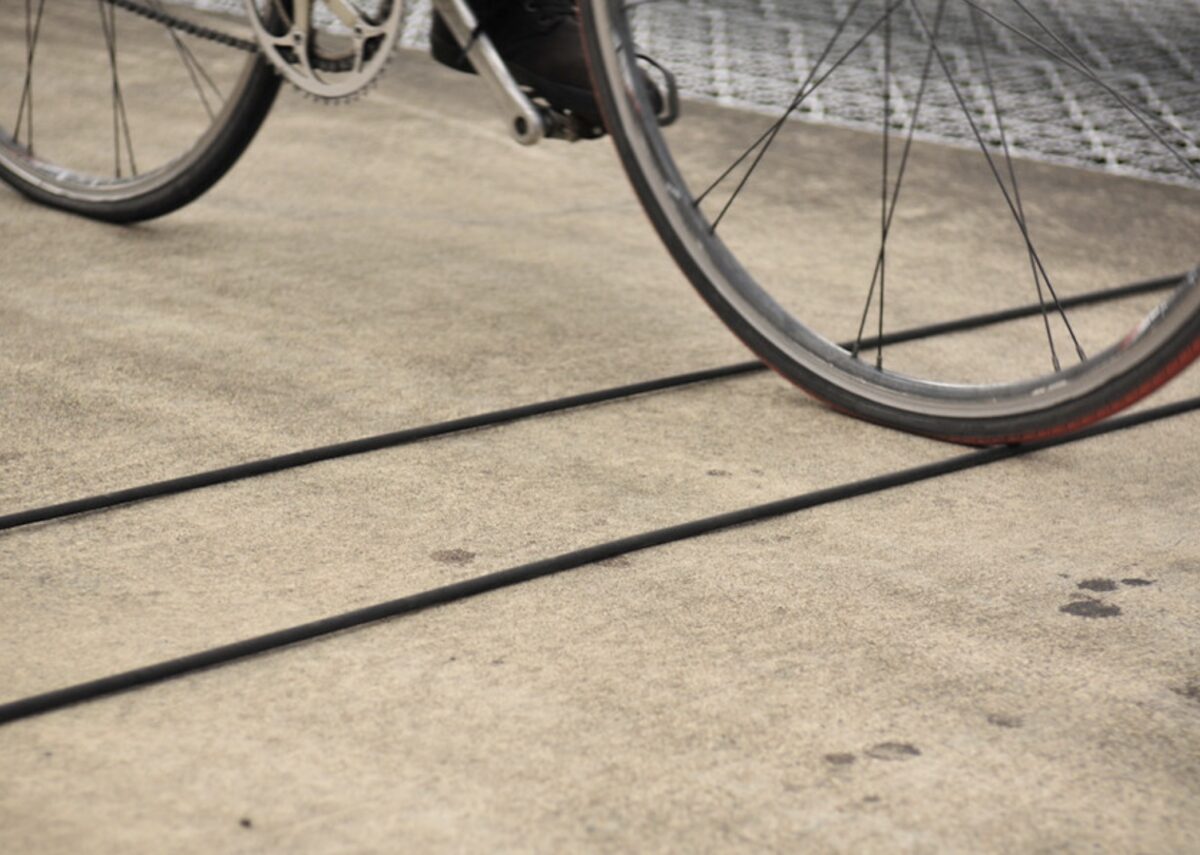 Back when the Hawthorne Bridge bike tracker was in a better state. (Photos: Jonathan Maus/BikePortland)
Back when the Hawthorne Bridge bike tracker was in a better state. (Photos: Jonathan Maus/BikePortland)
It’s always fun to see the Tilikum Crossing bike counter tick up as you pedal across the bridge, checking out how many other people have biked on the same route that day. But bike counters are an important tool beyond just novelty. People working to plan bike infrastructure projects – and acquire government funding and political support for them – need to know how many people are biking and where they’re going. In order to do that, they need to make sure they’re getting the most accurate count possible.
There are many tools to count bike trips; but each of them has its drawbacks. Ones that use smartphone data from apps only capture people who use them (and that have phones). Bike counters like the one above are expensive and don’t scale (they are also easy targets for vandals).
It’s a problem that has plagued cycling advocates for years; but researchers from Portland State University’s Transportation Research and Education Center (TREC) think they might have a solution. They call it “data fusion.”
A project team led by Dr. Sirisha Kothuri wanted to find out what happens when data from different tools are mixed. Their work was based on the idea that a more accurate picture of cycling traffic can be made by combining, “traditional and emerging data sources.”
The team looked at three newer “big data” sources — the Strava smartphone app, Streetlight Data (and analytics firm), and GPS figures from bike share systems — in six cities (Boulder, Charlotte, Dallas, Portland, Bend and Eugene). They fused that data with more traditional bike counters cities have used for many years.
They then created three location-based models to run the data through. “In general, the various data sources appeared to be complementary to one another; that is, adding any two data sources together tended to outperform each data source on its own,” reads the project summary. The findings from this study indicate that rather than replacing conventional bike data sources and count programs, big data sources like Strava and StreetLight actually make the old ‘small’ data even more important.”
“At ODOT we just adopted ‘Bicycle Miles Traveled’ as a new key performance measure, and we need a way to measure it, so this project very much helps to fill the gap on how we’re going to do that.”
Oregon Department of Transportation Research Analyst & Data Scientist Josh Roll sat on the project’s technical advisory committee and said the insights could help his agency get a better grasp on how well (or poorly) they’re serving bicycle riders. “At ODOT we just adopted ‘Bicycle Miles Traveled’ as a new key performance measure, and we need a way to measure it, so this project very much helps to fill the gap on how we’re going to do that,” Roll said in the project summary.
While creating this report, researchers uncovered another problem: despite support from agencies and jurisdictions, gaining access to the bike count data was difficult. Researchers noted that agencies appeared disorganized and were using questionable tactics when deciding where to place permanent count mechanisms, tending to “locate permanent counters in clusters of similar location types, resulting in little information about bicycle activity in different contexts.”
Portland is doing this better than most cities. The Portland Bureau of Transportation brought back its annual short-term bike counts this summer and Biketown has a transparent and robust data dashboard.
The lack of accurate bike counts and ongoing challenges in accessing the data are yet another way our system tilts in favor of car drivers. If we want to get more people on bikes and save our cities and our planet in the process, we’ve got to up our game when it comes to non-car traffic counting.
But don’t just take our word for it: “For transportation agencies wishing to support active travel to meet various sustainability, public health, and climate- related goals, quickly having accurate data for the entire network would be a giant leap in the right direction,” the report says.
Learn more and view the full report here.
Taylor has been BikePortland’s staff writer since November 2021. She has also written for Street Roots and Eugene Weekly. Contact her at This email address is being protected from spambots. You need JavaScript enabled to view it.


